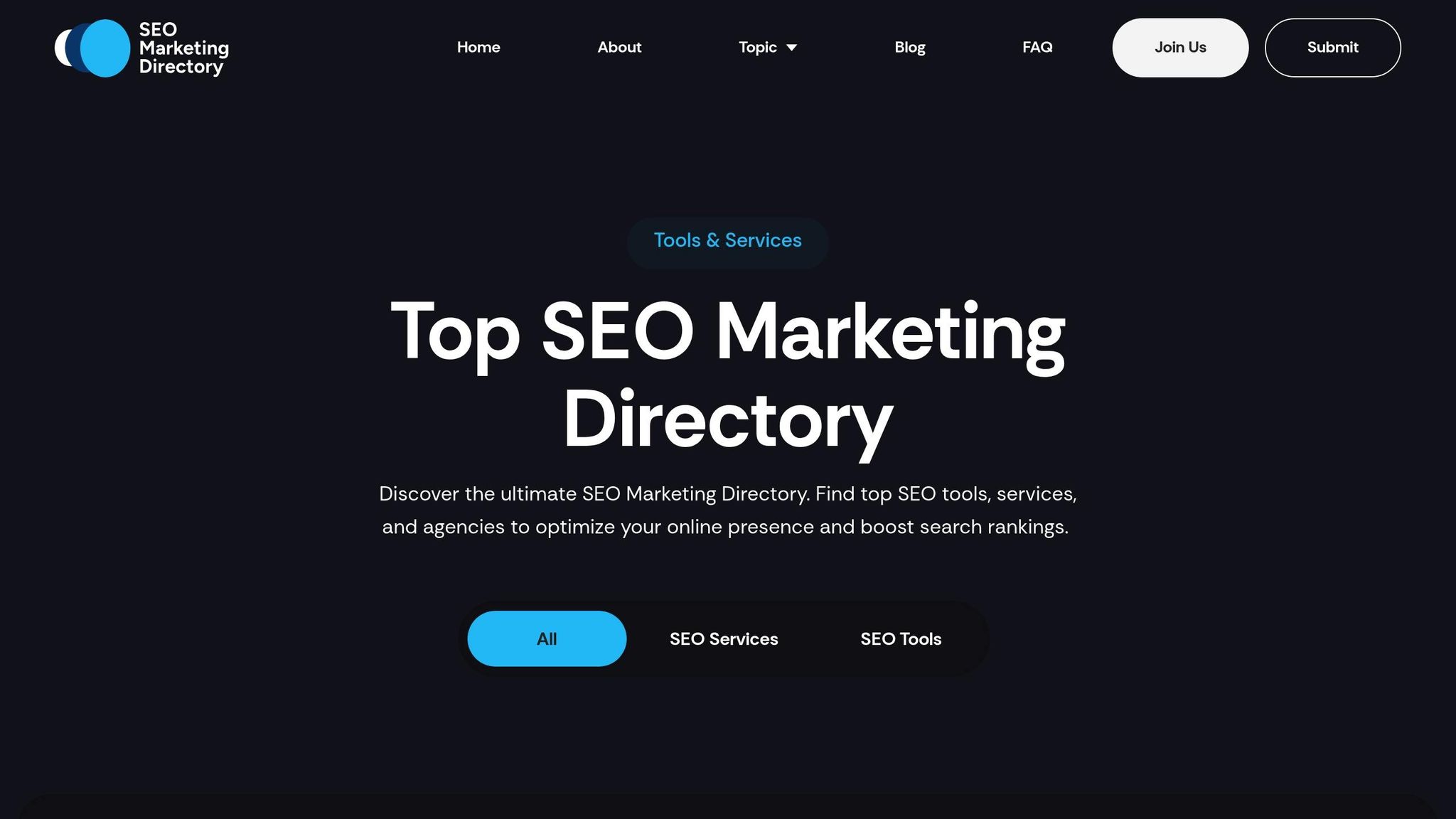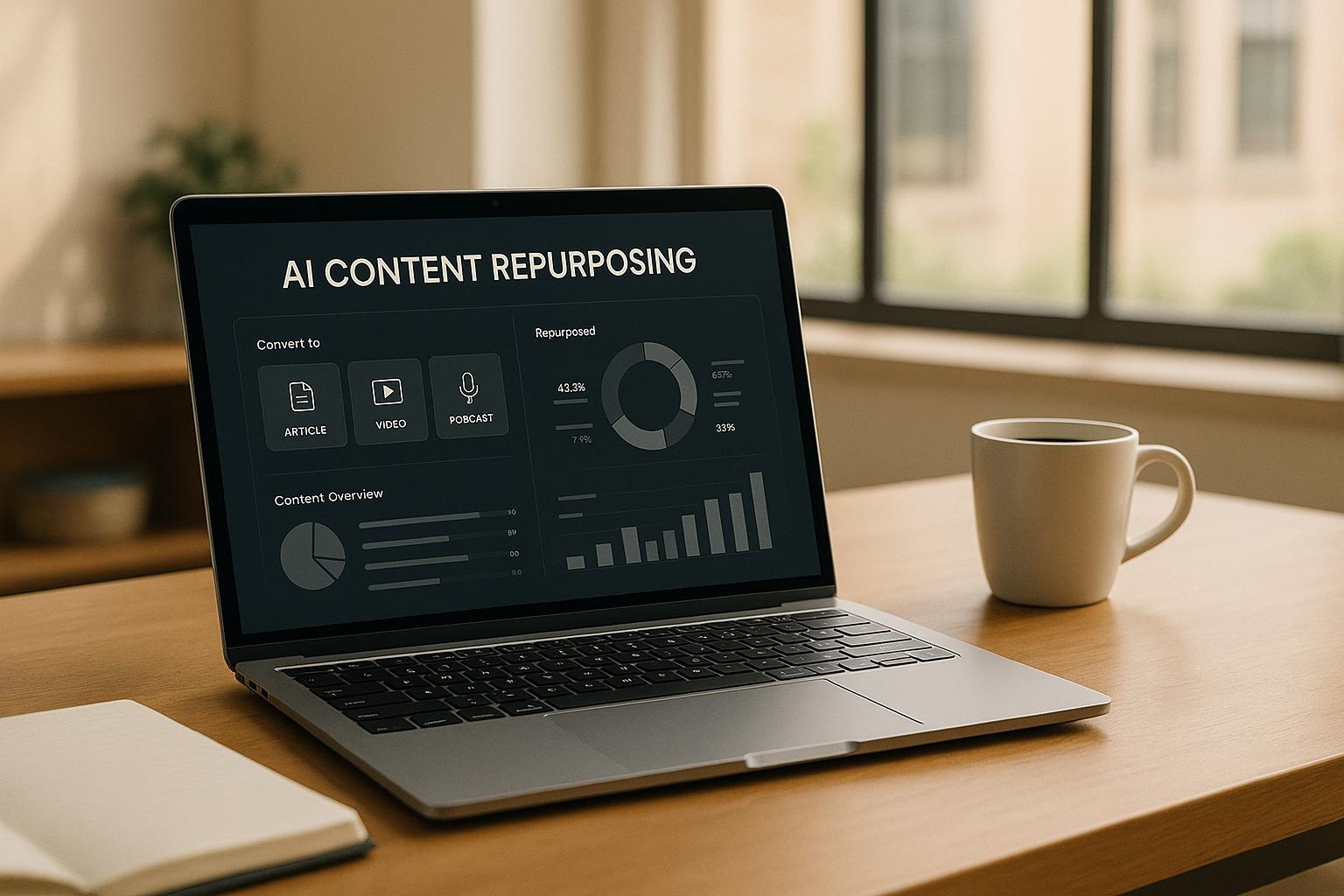Tracking multilingual SEO performance is key to growing your global presence. Here's why: over 75% of internet users don't speak English as their primary language, and 89% prefer engaging with brands in their own language. This means optimizing your site for multiple languages can significantly boost traffic and conversions.
To measure success, focus on these metrics:
- Organic traffic by language: Understand where your audience is coming from.
- Keyword rankings: Track performance across languages and regions.
- Conversion rates: Identify which language versions drive results.
- Bounce rates and session duration: Spot potential translation or usability issues.
- Technical aspects: Check hreflang tags, Core Web Vitals, and mobile-friendliness.
Tools like Google Analytics, Search Console, and platforms like Semrush or Ahrefs can help monitor and refine your multilingual strategy. By consistently analyzing data, you can make informed decisions to improve visibility and user experience across languages.
How to track multiple languages on a single domain
Key Metrics to Track
When managing multilingual SEO, it's essential to measure language-specific traffic, keyword rankings, conversions, and technical performance. These metrics help address differences in cultural preferences, regional nuances, and technical requirements.
Core KPIs for Multilingual SEO
To effectively track multilingual SEO, start by focusing on the most critical key performance indicators (KPIs).
One of the first metrics to monitor is organic traffic by language. This can help you identify trends and seasonal variations in different regions. Next, track keyword rankings across languages to see how well your content performs in various markets. Rankings can vary widely depending on factors like competition, search volume, and the quality of localization.
Keep a close eye on conversion rates by language. If conversion rates are low, it could indicate issues with translations, cultural misalignment, or even technical problems. Similarly, high bounce rates in specific languages might suggest that users are encountering translation errors, cultural disconnects, or technical glitches. Pair this with data on session duration and pages per session for a fuller picture.
Another crucial metric is the organic click-through rate (CTR) by language, which reflects how appealing your search listings are in different markets. A low CTR could mean your meta titles and descriptions need better localization and adaptation to local preferences.
"SEO KPIs connect your marketing objectives to your SEO reporting and should feature prominently in your SEO plan."
– Marcus Miller, SEO & PPC consultant, Bowler Hat
Brand loyalty metrics are also important. By tracking branded keyword impressions and clicks in different languages, you can gauge customer trust and loyalty. This data can also highlight regions where you may need to boost brand awareness efforts.
Technical SEO Metrics for Multilingual Sites
Technical performance is just as important as user behavior when it comes to global SEO.
Start by monitoring Core Web Vitals for each language version. This can help you identify loading issues caused by regional internet infrastructure.
Pay special attention to hreflang tag implementation. Tools like Google Search Console can help you spot errors such as missing tags, incorrect language codes, or orphaned pages. These issues can lead to search engines showing the wrong content to users.
Crawlability metrics are another priority. Make sure search engines can access and index all language versions of your site. Look for crawl errors, blocked resources, and indexation problems to catch technical issues early.
Don’t overlook mobile-friendliness. In mobile-first markets, usability issues specific to certain languages can arise due to differences in content length or design preferences. Monitoring these issues for each language version ensures a better user experience.
Lastly, review your structured data implementation. Structured data helps search engines understand your multilingual content. Keep an eye on errors and track the performance of rich snippets across language versions to ensure consistent results.
How to Segment Data by Region and Language
Segmenting your data provides deeper insights into these metrics. Use tools like Google Analytics to create custom segments that filter traffic by language and region. For instance, you can set up segments for "Spanish speakers in the US" or "French speakers in Canada" to understand how different audiences engage with your content.
Tracking organic traffic by region is critical. A drop in traffic from a specific market, such as Germany, could point to issues like hreflang errors or increased competition in that region.
Analyzing conversion funnels by language can reveal where users are dropping off. For example, the checkout process might work smoothly for English speakers but cause friction for others due to payment preferences or differences in how personal information is collected.
Compare engagement metrics - like bounce rates, time on site, and pages per session - across languages. Lower engagement in a specific language might indicate problems with translation or cultural relevance rather than technical issues.
Seasonal patterns also vary by region. For instance, Black Friday is a major event in English-speaking markets, while Golden Week drives traffic in Japan. Understanding these patterns can help you plan content and campaigns more effectively.
Finally, set up automated alerts for significant changes in key metrics by language. A sudden drop in organic traffic for a specific language version could signal a technical issue that requires immediate attention.
"True organic search success comes from understanding how users engage with your website and content, how visible your brand is in the search results, and how SEO contributes to real business outcomes."
– Kenzie Austin, Director of SEO, Envisionit
Setting Up Tracking Tools
Once you’ve pinpointed the metrics you need to monitor, the next step is setting up your analytics tools to effectively track multilingual SEO data. A proper configuration ensures you can monitor performance across languages and regions, while also catching potential issues before they affect your rankings.
Setting Up Google Analytics and Search Console

Google Analytics and Search Console are the cornerstones of multilingual SEO tracking. Getting these tools configured correctly from the start is critical for accurate and actionable data.
Configuring Google Analytics Views
To track traffic, user behavior, and conversions by language and region, create separate Google Analytics views for each target audience. For example, if you’re targeting Spanish speakers in Spain and Mexico, set up distinct views like "Spanish – Spain" and "Spanish – Mexico." Navigate to the Admin panel in Google Analytics, create a new view for each language version, and name them clearly. Then, apply filters to ensure each view only captures traffic from its intended audience.
Creating Custom Segments
Custom segments allow you to filter traffic by language and region, helping you identify trends and address issues specific to each market. For instance, you can create a segment for "German organic traffic from mobile devices" to analyze how mobile users in Germany engage with your content. To set this up, go to the Audience section in Analytics, click "Add Segment", and apply filters for language, country, and traffic source.
Setting Up Google Search Console Properties
To effectively monitor clicks, impressions, and rankings, create separate Search Console properties for each language and country version of your site. This is especially important because Search Console treats different URL structures as distinct properties. For example, if your site uses subdirectories like example.com/es/ and example.com/fr/, create individual properties for each. Similarly, if you use subdomains like es.example.com, set each one up as its own property.
Linking Analytics and Search Console
By linking Google Analytics with Search Console, you can view Search Console reports - such as queries and landing pages driving organic traffic - directly within Google Analytics. To integrate the two, go to Admin > Property Settings > Search Console in Analytics, click "Adjust Search Console", and select the appropriate property for each view. This integration provides deeper insights into the search queries bringing users to each language version of your site.
Choosing URL Structures for Better Tracking
Your site’s URL structure plays a huge role in tracking multilingual performance effectively. Google supports several URL structures for multilingual sites, each with its own tracking considerations:
- Country-specific domains (e.g.,
example.defor Germany) make geotargeting straightforward but can be costly and limit you to one country per domain. - Subdomains (e.g.,
de.example.com) are relatively simple to set up but might not immediately convey geotargeting to users. - Subdirectories (e.g.,
example.com/de/) are low-maintenance but may not clearly signal geotargeting and could be influenced by server location.
Avoid using URL parameters for language targeting, as they make tracking and segmentation more complex. Instead, Google recommends using distinct URLs for each language version, rather than relying on cookies or browser settings to determine content language.
Implementation Best Practices
When setting up your URL structure, aim for simplicity and clarity. Use concise, descriptive URLs in the audience’s language, such as example.com/es/zapatos-deportivos instead of example.com/es/sports-shoes for Spanish content on athletic footwear. Keep URLs short by avoiding unnecessary parameters, use hyphens to separate words, and ensure consistent case sensitivity. Implement UTF-8 encoding to handle special characters properly.
Hreflang Implementation
Hreflang annotations are essential for helping Google match the right language version of your page with the correct audience. If you have similar or duplicate content across different URLs in the same language, use the rel="canonical" tag alongside hreflang annotations to avoid duplicate content issues while keeping your tracking data clean.
Adding Third-Party SEO Tools
While Google’s native tools cover the basics, third-party platforms can take your multilingual tracking to the next level.
Semrush Integration
Semrush simplifies multilingual SEO tracking by consolidating data from Google Analytics and Search Console into a single dashboard. Its Position Tracking tool lets you monitor keyword rankings across languages and countries simultaneously, making it easy to set up separate campaigns for each target market.
Ahrefs for Competitor Analysis
Ahrefs is a powerful tool for analyzing competitors in multilingual markets. Use it to identify content gaps and assess how competitors perform in different regions. The Site Explorer feature provides organic traffic estimates by country, helping you prioritize the markets that offer the most growth potential.
Specialized Translation Tools
Translation tools with built-in SEO features can save time and ensure your multilingual site is optimized for search engines. WPML is a premium WordPress plugin with advanced multilingual features, while Polylang offers a free alternative with fewer capabilities. Weglot is another option, providing automatic translation and SEO optimization by generating hreflang tags and creating unique URLs for each language version.
Integration Strategy
For seamless tracking, integrate your third-party tools with Google Analytics and Search Console. Many professional SEO tools, like Semrush and Ahrefs, offer native integrations that sync data across platforms. For example, Semrush connects with Google Analytics, Search Console, and Google Ads, while Ahrefs can integrate with Google Sheets for custom reporting. Setting up automated reporting allows you to spot performance changes quickly and respond before they impact your rankings.
Analyzing and Reporting Data
Once your tracking tools are in place, it’s time to dive into your multilingual SEO data. By analyzing this information, you can uncover patterns and identify areas for improvement, helping you refine your strategy and optimize performance across different markets.
Reading Regional and Language Reports
To understand how each language version of your site is performing, segment your data effectively. Google Analytics is a great starting point for this, allowing you to focus on metrics that align with your business objectives.
Traffic Segmentation by Language
Use URL filters to isolate performance data for each language version. This lets you see which markets are driving the most valuable traffic and highlights any issues specific to a particular language.
Don’t just stop at visitor numbers. Take a closer look at metrics like bounce rates, session duration, and pages per session. For instance, a high bounce rate on your German pages might point to translation problems or a mismatch with audience expectations, while longer session durations on your Japanese site could indicate strong user engagement.
Keyword Performance Analysis
Google Search Console provides insights into the search queries that bring users to your site. Start by examining the top 10–20 keywords for each language, then expand as you get more comfortable with the process. Pay attention to click-through rates (CTR) and average position for each language to identify optimization opportunities.
Also, consider seasonal trends by comparing data year-over-year. Search behavior can vary significantly across regions, so understanding these patterns is key to aligning your content with local needs.
Conversion Tracking by Region
Tracking conversions by language helps you pinpoint high-value markets. Set up separate conversion goals in Google Analytics and monitor metrics like conversion rate, revenue per visitor, and cost per acquisition for each region. This data can guide your efforts to prioritize markets that offer the best return on investment, allowing you to fine-tune your strategies for localized success.
Once you’ve gathered these insights, it’s time to translate them into clear, actionable reports.
Building Custom Reports for Teams
Your reports should be concise yet detailed enough to support strategic decision-making. They should highlight key metrics and tell a story that resonates with your team.
Essential Metrics to Include
Focus on metrics that directly impact your business. Include data on organic traffic growth from multilingual pages, new leads or customers by country, and the performance of high-ranking international keywords. These numbers show the tangible benefits of your multilingual SEO efforts.
Celebrating Success Stories
Keep your team motivated by showcasing specific wins. Highlight achievements like improved keyword rankings, traffic spikes from certain regions, or successful content campaigns that resonated locally. These stories not only justify continued investment in multilingual SEO but also keep everyone engaged and aligned.
Roll-Up Reporting for Multiple Markets
If you’re managing multiple international websites or a large volume of multilingual content, roll-up reporting can give you a comprehensive view of your global SEO performance. Create summary dashboards to track overall trends, and include detailed breakdowns for individual regions or languages. This approach helps executives see the big picture while providing regional managers with actionable insights.
Regularly reviewing these reports ensures your strategy stays on track and adapts to changing conditions.
Regular Reviews and Strategy Updates
Consistent monitoring is crucial for multilingual SEO. Establish a review schedule to catch issues early and make informed adjustments without getting bogged down in short-term fluctuations.
Review Frequency and Focus
"SEO analytics should be reviewed once per week, or once every two weeks, to get a greater sense of how your newly-published or newly-optimized content is performing." - Fire&Spark
Weekly reviews can help you spot immediate issues like ranking drops or technical problems. Monthly reviews, on the other hand, allow for deeper analysis of keyword performance, content effectiveness, and user behavior patterns. Use these sessions to identify trends, evaluate what’s working, and uncover opportunities for improvement.
Identifying Actionable Insights
Look for insights that lead to specific actions. For example, if your French content consistently outperforms other languages, analyze what makes it successful and apply those lessons elsewhere. If a keyword performs well in one region but not another, explore local search habits and cultural differences to understand why.
Year-over-year comparisons can also reveal seasonal patterns. Knowing when your German audience searches for certain products or when your Spanish-speaking users are most active can help you schedule content and campaigns for maximum impact.
Adapting Strategy Based on Data
Use your findings to refine your approach. For instance, if a specific URL structure works better in one region, consider adapting your site architecture. If certain content formats resonate more with particular audiences, prioritize creating similar materials for those markets.
Document these insights and adjustments to build a knowledge base that can guide your team and inform future decisions. This documentation is especially valuable for onboarding new team members or explaining your strategy to stakeholders.
sbb-itb-5be333f
Using Top SEO Marketing Directory for Multilingual SEO

Managing multilingual SEO can be challenging, especially with the variety of tools and languages involved. The Top SEO Marketing Directory provides a curated list of effective tools and services designed to simplify global SEO efforts. Below, we explore how this directory helps streamline the process of discovering and selecting tools for multilingual SEO.
Finding Tested SEO Tools and Services
The directory offers a handpicked selection of tools specifically designed to tackle the complexities of multilingual SEO. Instead of spending hours researching individual tools, you’ll find keyword research platforms, analytics solutions, and content optimization services that have already been evaluated for their effectiveness in international markets.
Some tools stand out for their ability to deliver multilingual analytics, AI-driven content optimization, and keyword clustering. For instance, AI-powered optimization tools can help tailor your content to fit different cultural contexts, while keyword clustering solutions make it easier to organize your strategy across multiple languages.
For performance tracking, look for tools that offer multilingual analytics. These tools allow you to monitor how your website performs in various regions, providing segmented data to guide your decisions. Many of the listed options also support hreflang implementation, which is essential for targeting users in different languages and locations.
The directory also includes resources for link building, which are invaluable for international SEO. These tools can help you identify regional opportunities and analyze competitors’ backlinks, opening up new avenues for local link-building strategies.
Simplifying Tool Selection for Global SEO
Beyond helping you discover tools, the directory makes it easier to choose the right ones for your global SEO strategy. Its structure highlights solutions that provide accurate translation and localization, ensuring your content resonates with local audiences. This is particularly important because professional translation services often combine precision with efficiency, even though they may be more expensive than machine translations.
The tools listed in the directory align with essential metrics and technical requirements, ensuring seamless tracking of multilingual performance. When evaluating options, focus on tools that provide clear, actionable insights and integrate smoothly into your existing SEO workflow.
The directory doesn’t stop at tools - it also features multilingual SEO agencies that offer a full range of services. These include keyword research, localization, content translation, and technical implementation, all tailored to specific regions and markets.
For businesses targeting areas where Google isn’t the dominant search engine, the directory includes tools designed for local platforms. While Google holds a global market share of approximately 83.5%, search engines like Baidu in China and Naver in South Korea dominate their respective regions, making these tools essential for localized SEO efforts.
Finally, the directory provides transparent pricing information, helping you choose tools that fit your budget. Options range from free basic access to premium enterprise solutions, with some tools offering advanced features starting at $49/month. This transparency ensures you can make cost-effective decisions while meeting your multilingual SEO needs.
Conclusion
For global businesses, keeping a close eye on multilingual SEO performance isn’t just a nice-to-have; it’s essential. With 75% of internet users not speaking English as their primary language, tapping into multilingual content can increase traffic by an impressive 47%.
To do this effectively, you need to monitor key metrics like organic traffic trends, keyword rankings, and conversion rates for each language version of your site. The technical side is just as important - things like correctly implementing hreflang tags, using optimized URL structures, and ensuring translated metadata are in place. These elements are critical for collecting accurate performance data, which allows you to make well-informed adjustments when needed.
Setting up robust tracking systems through tools like Google Analytics and Search Console is a great starting point. And here’s why it matters: 76% of consumers prefer buying products when information is available in their native language. This makes localized content optimization a game-changer for boosting conversions.
Regular analysis is key to staying on top of your multilingual strategy. Monthly performance reviews let you respond quickly to market changes while keeping your tracking consistent and reliable.
Lastly, if you’re looking for tools to make this process smoother, the Top SEO Marketing Directory can be a lifesaver. It offers a curated list of resources specifically evaluated for international markets, helping you choose tools that fit seamlessly into your workflow while saving time and effort.
FAQs
How can I use Google Analytics to track organic traffic by language for my multilingual website?
To monitor organic traffic by language on a multilingual website using Google Analytics, you need to ensure your setup is designed specifically for multilingual tracking. Start by creating language-specific filters or segments to separate traffic for each language version of your site. This can be done by leveraging URL structures, subdomains, or query parameters that distinguish between languages.
You can also use Google Tag Manager to configure custom tags or triggers that collect language-specific data. This approach enables you to track and analyze organic traffic performance for each language. With this information, you can uncover patterns, fine-tune your content, and adjust your multilingual SEO efforts to achieve better outcomes.
What are the best practices for using hreflang tags to boost multilingual SEO?
How to Use Hreflang Tags for Multilingual SEO
Using hreflang tags correctly is key for optimizing your site for multiple languages and regions. Here’s what you need to know:
- Always use the proper ISO codes for both the language and region (e.g.,
en-usfor English in the United States). This ensures accuracy. - Include hreflang tags on every page that has regional or language-specific variations.
- Set up separate pages for each language or region, and make sure the content is unique and tailored to that audience.
When implemented correctly, hreflang tags help search engines show the right version of your content to users in specific regions. This not only prevents duplicate content issues but also boosts your visibility in local search results, giving your multilingual SEO efforts a real edge.
What is the best URL structure for tracking and improving SEO on a multilingual website?
Choosing the right URL structure for a multilingual website largely depends on who you're trying to reach and how your site is set up technically. Country-specific top-level domains (ccTLDs), like domain.fr for France, send a strong signal to search engines about geographic targeting. However, they can be more expensive and require more effort to manage.
On the other hand, subdirectories (e.g., example.com/fr/) offer a simpler and more affordable solution. When combined with properly implemented hreflang tags, they can still effectively direct users and search engines to the correct localized content.
For the best results, keep your URLs clear and consistent, and always include hreflang attributes. This not only helps search engines understand your regional targeting but also gives you better insights into how your multilingual content is performing.


